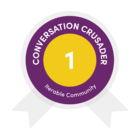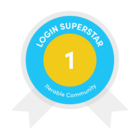Win a VIP Trip to Activate Summit 2025
Want to attend Activate Summit 2025 in San Jose, CA (April 1-3)? We’re sending TWO lucky Iterable customers on a VIP trip to the biggest customer engagement event of the year! Haven’t entered yet? There’s still time! Check out the announcement post for all the details on how you can qualify.
📅 Tuesdays and Thursdays just got better! Check out new community posts for fresh insights, discussions, and updates.
Keeping the Human Touch in Modern Marketing
Leaning into the Transform Your Strategy track, one of our sessions at Activate Summit will explore how today’s top brands are balancing automation with authenticity to create more impactful, human-centered marketing.
Marketers love their buzzwords, but do customers? 🤔 In a world overflowing with jargon and robotic messaging, the brands that stand out are the ones that communicate with authenticity and real human connection.
It’s not just about what you say but how you say it. Whether it's a conversational tone, personalized storytelling, or simply speaking your audience’s language, great marketing feels human.
Today’s prompt:
What’s one way you make your marketing feel more human? How do you move beyond automation and generic messaging to create moments that truly connect with your audience? Think about tone, storytelling, personalization, or even small details that make a difference.
Drop your answers in the comments for a chance to win a free trip to Activate Summit!









